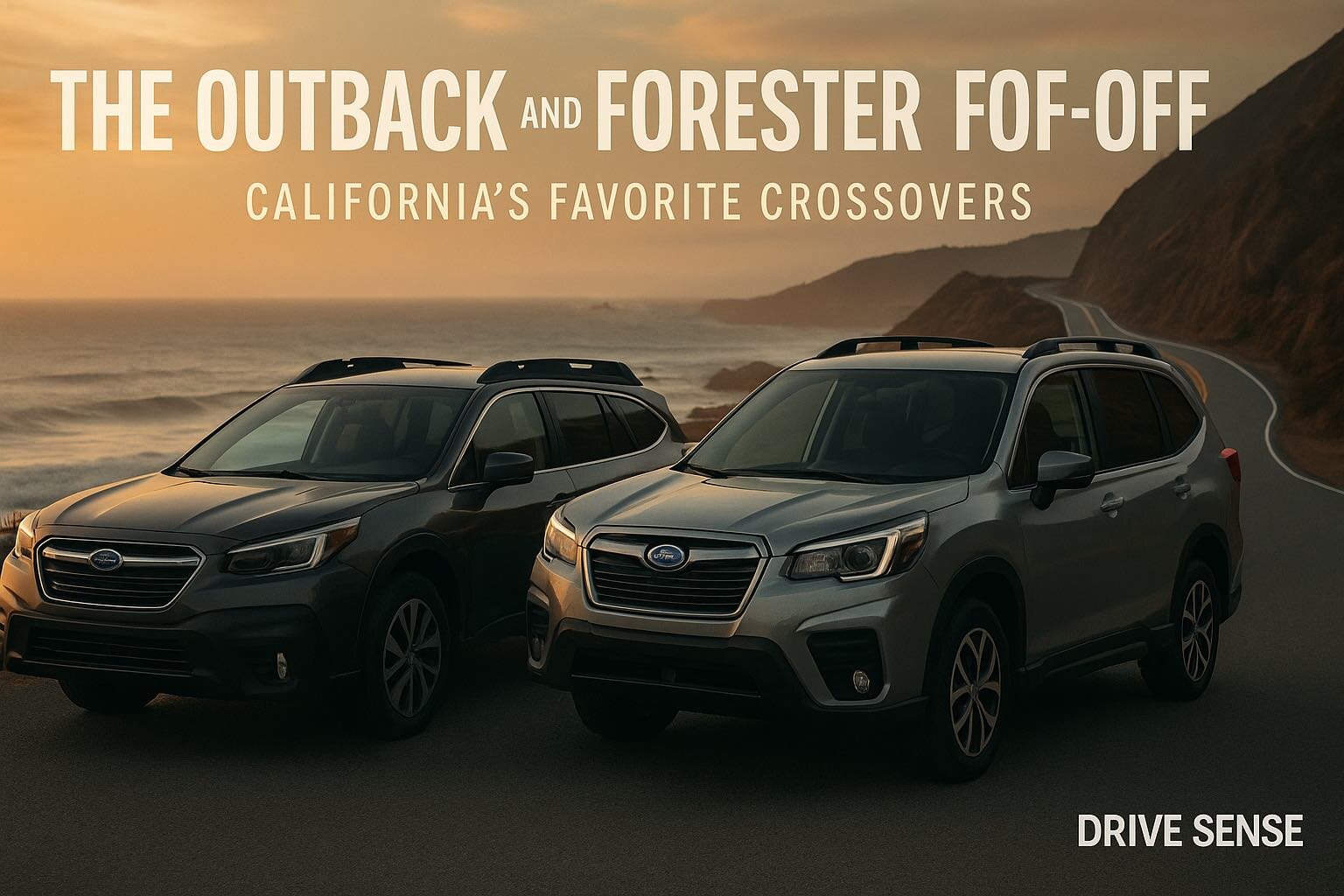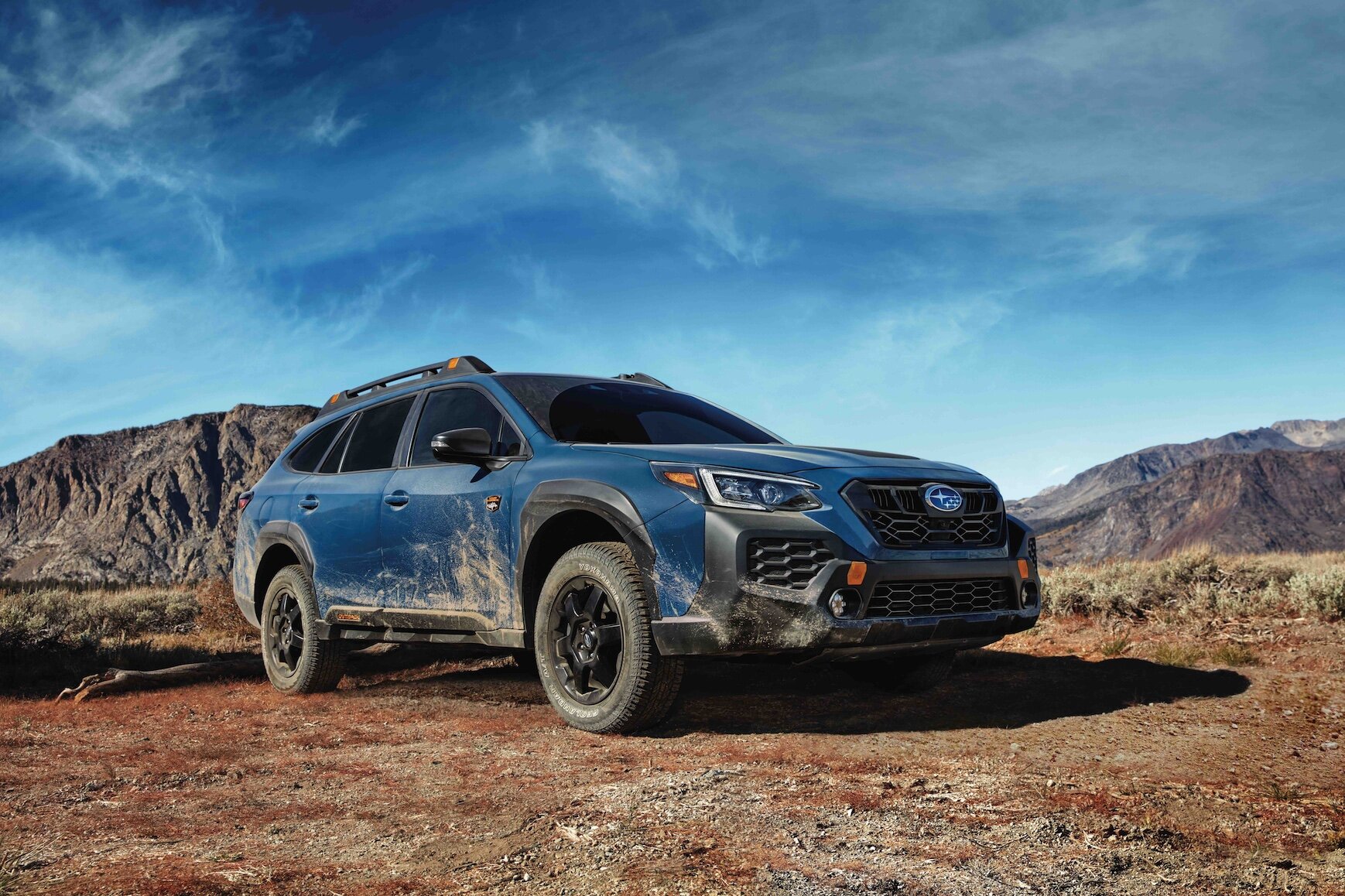The Outback and Forester Face-Off: California’s Favorite Crossovers
Subaru has carved out a special place in the American automotive psyche—especially out here on the West Coast. Whether I’m watching a parade of Subarus snake up Highway 1 or noting how many Foresters and Outbacks fill Bay Area parking lots, it’s obvious these two models have earned their loyal followings. But with so many similarities—standard all-wheel drive, boxy practicality, and a reputation for reliability—how do you decide which one fits your life best? Let’s dive into the latest versions, focusing on 2024 models, to see how they stack up for real-world drivers, road-trippers, and EV-curious buyers.
Specs Snapshot: Guts and Grit
Both the Subaru Outback and Forester are technically classified as SUVs, but they occupy slightly different spaces. The Outback is often described as a wagon with serious off-road chops. It rides lower than most SUVs but offers impressive ground clearance (8.7 inches), just like the Forester. The Forester leans into its upright, traditional SUV look, with a boxier silhouette and more vertical cargo space in back.
The 2024 Outback comes with two flat-four engine choices: a naturally aspirated 2.5-liter making 182 horsepower, and a turbocharged 2.4-liter producing 260 hp (the latter found in XT trims). The Forester sticks with one engine—a naturally aspirated 2.5-liter flat-four making 182 horsepower. Both employ Subaru’s Lineartronic CVT (continuously variable transmission), which does its best to mimic traditional gear changes but can sometimes let the engine drone if you’re heavy on the throttle.
Neither model has gone electric yet—a disappointment for those of us watching the EV revolution from the driver’s seat—but Subaru has announced future electrified plans. For now, fuel economy sits in familiar territory: EPA estimates for both hover around 26 mpg city/33 mpg highway for non-turbo Outbacks and Foresters. The turbo Outback dips to about 23/30 mpg. Real-world numbers tend to be close; my mixed driving in an Outback Touring XT averaged about 27 mpg without much effort.
Competitors? Think Honda CR-V Hybrid, Toyota RAV4 Hybrid, Ford Escape Hybrid, and even the all-electric Toyota bZ4X or VW ID.4 if you’re ready to ditch gas entirely. But Subaru’s unique blend of standard AWD and outdoorsy attitude still sets these two apart from most mainstream rivals.
Inside the Cabin: Where Buttons Meet Big Screens
Climbing inside either car after a rainy hike in Marin or a sandy afternoon at Ocean Beach, you’ll notice just how forgiving Subaru interiors are. Both cabins offer easy-clean surfaces, loads of practical storage nooks, and seats that feel supportive over long hauls—no squishy bolsters or slippery leather here unless you spec higher trims.
The latest Outback impresses with its available 11.6-inch vertical touchscreen—a feature that feels lifted straight from Tesla’s playbook but with Subaru’s own twist. It handles navigation, audio, climate controls (with some physical knobs mercifully retained), and smartphone integration via wireless Apple CarPlay and Android Auto on higher trims. In practice, the screen is responsive but can be slow to boot on cold mornings; I found myself missing hard climate buttons when my hands were chilly post-surf session.
The Forester sticks with a more traditional dashboard layout—smaller screens (6.5 or 8 inches depending on trim), clearly labeled buttons, and less digital fuss overall. Some might call it dated; I’d argue it’s refreshingly intuitive for folks who don’t want to hunt through menus just to adjust fan speed or change radio stations.
Rear seat space is generous in both—tall friends will be happy in either—but cargo capacity tips slightly in the Forester’s favor thanks to its upright tailgate and squarer shape (76 cubic feet seats folded vs. about 75 in the Outback). Both swallow a full Costco run or camping gear with ease.
On the Road: The Feel-Good Factor
I’ve driven both up winding Skyline Boulevard and through San Francisco traffic snarls enough times to know their personalities well. The Outback feels more like a car than an SUV—a compliment from me—with a lower center of gravity that translates into confident cornering and less lean when you hustle through mountain switchbacks. Even on standard all-season tires, grip is reassuringly secure during sudden downpours.
The turbocharged XT version adds real punch off the line; merging onto Highway 101 feels effortless, with none of the breathlessness you sometimes get from four-cylinder crossovers loaded with people and gear. That said, you do notice some turbo lag if you floor it from a stop—a brief pause before power comes online—but once underway, passing is drama-free.
The Forester doesn’t offer that extra surge but compensates with outstanding visibility—those tall windows make everything from parallel parking in North Beach to threading through Tahoe snowstorms less stressful. The steering is light but precise; there’s an honesty to how it drives that longtime Subaru fans will appreciate. Ride comfort is tuned toward softness—it soaks up potholes without complaint—but you’ll hear more wind noise at highway speeds compared to a RAV4 Hybrid or even an Outback.
Neither is particularly sporty compared to something like a Mazda CX-50 (which corners flatter), but both hold their own in everyday driving—and there’s a certain peace-of-mind that comes from feeling planted on wet pavement or gravel trails.
SUVs for Adventurers: Features That Matter
If your weekends involve kayaking trips or mountain biking outside Santa Cruz, both Subarus deliver the goods where it counts: standard all-wheel drive (still rare among compact SUVs), roof rails sturdy enough for real gear-hauling (not just show), and X-Mode traction control that optimizes power delivery on sketchy surfaces.
The Outback Wilderness trim turns things up further: extra ground clearance (9.5 inches), chunkier tires, unique bumpers for better approach angles, and waterproof upholstery for muddy adventures. The Forester Wilderness echoes this formula but can’t quite match the Outback’s towing capacity (3,500 lbs for turbo Outbacks vs. 1,500 lbs for most Foresters). If you tow small campers or boats regularly—or want maximum capability for rough roads—the Outback wins this round.
Tech & Safety: Eyesight Everywhere
Both models come standard with Subaru’s EyeSight suite—adaptive cruise control that smoothly follows traffic flow, lane centering that keeps you between lines even when you’re distracted by Golden Gate views, plus automatic emergency braking and blind spot monitoring on higher trims. In practice, EyeSight works reliably but sometimes beeps more than necessary in crowded city traffic—a minor annoyance I’ve learned to tune out.
A few years ago I’d have dinged Subaru for subpar infotainment graphics or slow response times; recent updates have improved things but don’t expect Mercedes-level polish. Wireless device charging is available but not always standard; check your trim before assuming your phone will juice up on the go.
Sustainability & EV Considerations: What About Going Electric?
This is where my own interests tug hardest at Subaru’s collar: while both models excel as practical gas-powered crossovers—with above-average efficiency and low emissions for their class—they lag behind rivals offering hybrid or electric versions right now. Toyota’s RAV4 Prime plug-in hybrid sprints past both in power and delivers over 40 miles of electric range per charge; Ford’s Escape Hybrid offers similar savings at the pump.
If you’re waiting for an electric Subaru SUV with symmetrical all-wheel drive—join the club! Subaru has teased new EVs coming soon (and already sells the Solterra EV), but neither Outback nor Forester currently offers hybrid or electric powertrains as of mid-2024.
Lifestyle Matchmaking: Which One Belongs in Your Driveway?
If your idea of adventure leans toward spirited road trips with lots of highway miles—or if towing small trailers is part of your plan—the Outback feels more refined on pavement while offering just enough ruggedness when you need it most. Its longer body makes it a little harder to park in tight San Francisco garages but rewards you with smoother highway rides and extra tech features if you climb trims.
The Forester counters with unbeatable visibility, easier maneuverability around city blocks or trailheads, plus just enough ground clearance to keep pace with bigger SUVs off-road—all while costing less than most comparable Outbacks when similarly equipped.
The Final Take: Familiar Faces With Fresh Competition
If you’re deciding between these two Subarus based solely on specs or sticker price, you might miss what makes each special: they’re practical companions that feel ready for almost anything California throws at them—rain-soaked commutes or dusty national park escapes included.
I do wish Subaru would hurry up with electrified options; as someone who covers EVs daily—and lives among early adopters—I see growing demand for plug-in flexibility that these otherwise excellent vehicles don’t yet deliver.
For now? Pick the Outback if your adventures are bigger, your drives longer, or your need for turbocharged passing power outweighs cabin height preferences. Choose the Forester if ease-of-use matters most—or if you simply want an honest SUV that nails the basics better than most rivals. That’s where I land after another week splitting time between them: either way, your next adventure will probably start—and end—with muddy floor mats and a grin behind the wheel.


